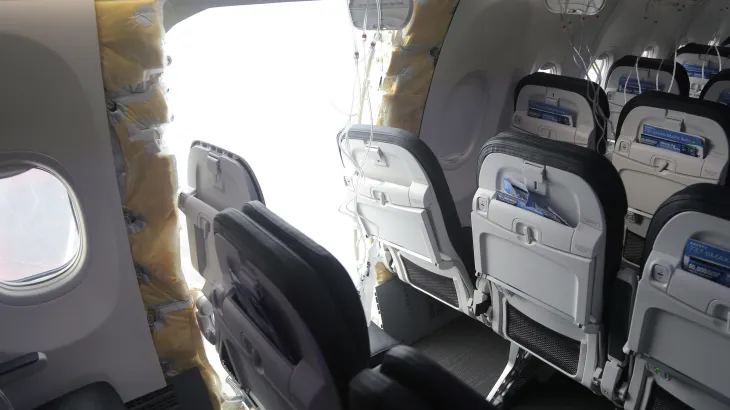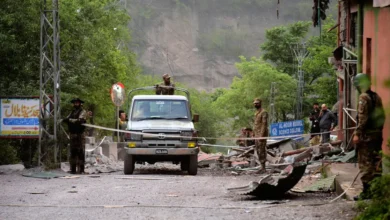What does the Alaska Airlines incident tell us about air safety?

Last week, an Alaska Airlines Boeing 737 Max 9 aircraft was forced to make an emergency landing in Portland, the United States, when a cabin panel blew off in midair leaving a gaping hole in the aircraft’s fuselage. Just days before, a Japan Airways Airbus collided with a smaller coastguard plane, resulting in the Airbus catching fire.
The Federal Aviation Administration (FAA) has ordered an inquiry into the incident and several passengers filed a class action lawsuit against Boeing in Washington state on Thursday.
So, is it really safe to travel by air? Here is what we know about the Alaska Airlines incident and the general safety of aviation:
What happened to the Alaska Airlines flight?
On January 5, just moments after takeoff, a cabin door panel blew off in midair during an Alaska Airlines flight from Portland to Ontario, leaving one side of the aircraft’s body with a gaping hole, reducing cabin pressure and prompting an emergency landing. The blown-out door panel was later discovered by a Portland teacher, in his garden.
Federal officials in the US ordered the temporary grounding of all Boeing 737 Max 9 jetliners until they can be inspected.
The cabin panel that flew out was a “door plug” installed over an extra emergency exit door, which had been removed.
Thankfully, no one was seated next to the gaping hole. Additionally, the plane was only 16,000 feet (4,876 metres) above the ground. Planes typically fly more than 31,000 feet (9,448 metres) when they are at their highest. Had the aircraft been much higher, the pressure difference could have become large enough to suck passengers out of the aircraft, former FAA accident investigator Jeff Guzzetti told The Washington Post.
The aircraft, which had departed from Oregon and was heading for California, landed safely in Portland with all 174 passengers and six crew members mostly unharmed. Some passengers sustained minor injuries.
The aircraft is a new Boeing 737 Max 9 which had been delivered to Alaska Airlines in late October and certified as safe by the FAA in early November. It had been in service for just eight weeks.
London-based independent aviation expert John Strickland told Al Jazeera that the panel which flew off is supposed to be a secure part of the aircraft’s structure. “That’s why it’s more surprising and a matter of concern that this blowout happened,” he said.
London-based aviation analyst and consultant Alex Macheras agreed: “This should not be downplayed, that’s for sure. Because in modern commercial aviation, we do not see sections of an aircraft body, of fuselage, becoming separated from the rest of the aircraft, certainly not mid-flight.”










